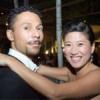-
Posts
4,939 -
Joined
-
Last visited
-
Days Won
132

Ray Singer replied to KyleH's topic in Translation Assistance

Ray Singer replied to Eds's topic in Translation Assistance

Ray Singer replied to Eds's topic in Translation Assistance

Ray Singer replied to Gus H's topic in Translation Assistance

Ray Singer replied to Gus H's topic in Translation Assistance

Ray Singer replied to Gus H's topic in Translation Assistance

Ray Singer replied to Gus H's topic in Translation Assistance

Ray Singer replied to Chas1815's topic in Translation Assistance



